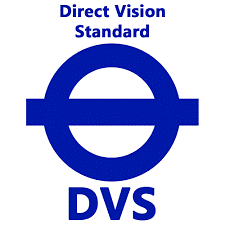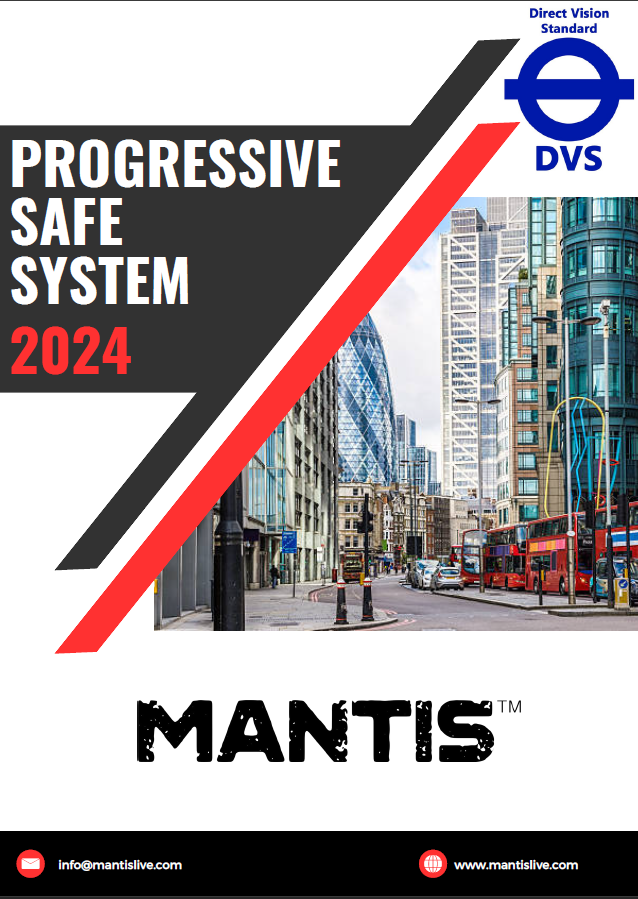DVS 2024
Your guide to achieving compliance for MOIS, BSIS & CMS requirements under the new Progressive Safe System regulations

Understanding Progressive Safe System
MOIS (Moving Off Information System)
CMS – (Camera Monitoring System)
BSIS (Blind Side Information System)
Audible alerts to driver – 1 for VRU near, 1 for imminent collision
Driver Alert for system faults (sensor malfunction / video loss)
External audible left-hand turn warning
Vehicles which previously achieved a 1-star rating under the Direct Vision Standard 2021 regulations will be required to install the above and successfully apply for and receive a certification for PSS. You can check your vehicles current star safety rating at: https://tfl.gov.uk/modes/driving/dvs-safety-permit-application/
Applications for updated licenses begin 24th June 2024 via the TFL website.
If you hold an existing HGV safety permit for a zero, one or two star rated HGV, it will expire at midnight on 27 October 2024. Your zero one or two star rated vehicle must have the Progressive Safe System fitted to operate in London from 28 October 2024.
The New Regulations Explained
CMS - Camera Monitoring System
MOIS - Moving Off Information System
Driver Alerts
BSIS - Blind Spot Information System
Fault Reporting
Left-Hand Turn Alert
Vehicle star ratings
The DVS star rating of all HGVs covered by the Safety Permit Scheme is based on the DVS rating scale of zero to five stars. The threshold star rating for vehicles to receive a permit without a PSS condition will be three stars from 28 October 2024, higher than the current one star for fitting the Safe System.
The purpose of applying a star rating is to measure the driver’s direct field of view and ensure a minimum standard of vehicle safety. This reduces the risk of close proximity blind spot collisions, particularly with vulnerable road users.
Identifying the star rating:
The rating of your vehicle will be primarily determined by your vehicle’s manufacturer using the approved HGV DVS technical protocol. Where the DVS star rating is one star or above, increasing to three stars from October 2024, fleet operators will be able to apply for a safety permit with no further action required. Where the rating is zero, one or two stars, or where a vehicle has not been or is unable to be rated, the vehicle must be fitted with the PSS as outlined in section four, before a permit can be granted. Operators must be able to demonstrate compliance with the requirements set out in sections five and six when applying for a safety permit.
For newly manufactured vehicles:
Your vehicle manufacturer will keep a record of DVS star ratings for individuals products and models, and share this with us. Permits are not automatically issued, so operators will need to apply for a permit when a new vehicle is added to the fleet. For existing vehicles, manufacturers will consider ratings based on the vehicle chassis number as provided by the operator. Any DVS rating advised will reflect the specification of the vehicle at first stage manufacture. Multi-stage manufacture and later modifications are not reflected in the DVS rating. The star rating of a vehicle may differ between different variants of a particular vehicle model, depending on the specific options chosen during manufacture. Your manufacturer will be able to advise. (via TFL Direct Vision Standard: Guidance for operators)
Beyond Compliance

Welcome to MANTIS – your trusted leader in connected CCTV solutions, ensuring the safety of fleets across the UK.
Our MANTIS DVS IQ kit, coupled with the Evidence Centre, exceeds industry standards and brings you unmatched benefits:
Insurance Premium Reduction: Benefit from reduced insurance premiums with our comprehensive connected CCTV solutions.
Driver Training Capabilities: Enhance road safety through on-demand video evidence for effective driver training.
Instant Footage Retrieval: Retrieve footage instantly, with the ability to access recordings up to 6 weeks in the past* (*dependent on daily capture duration).
Auto-upload of Incidents: Streamline your workflow with automatic uploads of incidents like harsh braking, harsh steering, and collisions.
Multi-network Data Coverage: Enjoy unparalleled coverage with multi-network data, setting the standard in the UK.
Integrated seamlessly with Webfleet & Geotab telematics, MANTIS provides real-time insights into driver performance.
Receive the latest reports, including video loss or memory storage issues, and a daily health check report directly to your inbox, outlining any concerns for every vehicle in your fleet.
MANTIS also proactively monitors the health of your fleet and automatically reports serious faults to our technical support team. Choose MANTIS for a connected CCTV solution that not only meets but exceeds industry compliance, ensuring the safety and security of your fleet.
